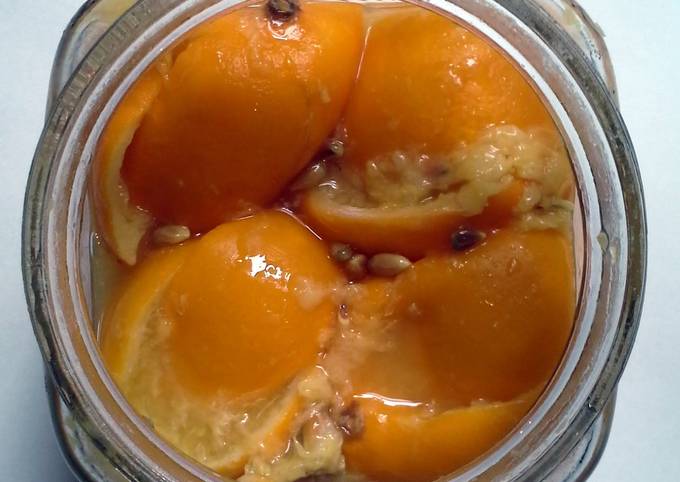
Hey everyone, it’s Brad, welcome to our recipe site. Today, I’m gonna show you how to prepare a special dish, preserved meyer lemons. One of my favorites. For mine, I will make it a bit tasty. This will be really delicious.
Use a wooden spoon to press lemons to fit. Add lemon juice and any remaining salt. Seal jar tightly and shake to combine. Toss with salt in a bowl and pack into jar.
Preserved Meyer Lemons is one of the most well liked of recent trending meals in the world. It is simple, it’s quick, it tastes yummy. It’s appreciated by millions every day. They’re fine and they look fantastic. Preserved Meyer Lemons is something which I have loved my entire life.
To get started with this recipe, we must prepare a few components. You can cook preserved meyer lemons using 3 ingredients and 12 steps. Here is how you can achieve that.
The ingredients needed to make Preserved Meyer Lemons:
- Take 1/2 cup kosher salt, or more as needed
- Make ready 8 Meyer lemons, or any type of lemon
- Make ready 4 Meyer lemons for juicing
To your glass jars (you may need a few depending on how big your lemons are), divide the. Making preserved lemons was also a surprise, because the process is so similar to making kraut or any other lacto-fermented vegetable: lemons + salt + time. And because lemons come packed with juice the brine is already started for you. For this batch we used delightfully sweet Meyer lemons, but regular lemons work great as well.
Steps to make Preserved Meyer Lemons:
- Wash lemons thoroughly, giving them a good scrub
- Prepare a glass jar large enough to hold all lemons by washing thoroughly with hot soapy water
- Cut each lemon in half lengthwise, stopping about 1/4-1/2 inch at base. Cut again lengthwise so that the lemon is cut into quarters but the pieces are still attached at the base and you are able to separate the quarters a bit
- Add 2 tbsp salt to bottom of jar
- Separate quarters of each lemon and generously sprinkle salt on all surfaces of the inside of the lemon
- As each lemon is salted, place in jar, pushing down with a wooden spoon to release juices
- When all lemons are in the jar and have been pressed, pour remaining salt on top, or add 2 tbsp if needed
- Juice remaining lemons and add juice to jar so that lemons are fully covered (usually 2-4 lemons)
- Place lid on jar and leave for 3-4 days (room temperature) turning the jar upside down occasionally to distribute juices
- After 3-4 days, refrigerate for at least 3 weeks but will keep indefinitely
- To use preserved lemons, remove lemon quarters as needed, rinse under tap water (to remove salt), separate the rind and the pulp. Discard pulp. The rind (including the pith) is most commonly used.
- The rind will be soft, have a muted color and have a somewhat translucent appearance. The flavor will be intense but lack the mouth-puckering tartness of a raw lemon. Use in stews, sauces, dressings, almost anywhere you would use raw lemon.
And because lemons come packed with juice the brine is already started for you. For this batch we used delightfully sweet Meyer lemons, but regular lemons work great as well. Just choose the best lemons you can get. Now that you have preserved Meyer lemons at your disposal, experiment with using them beyond the Moroccan tagine - they are wonderful in couscous dishes, bean salads, warm stews or curries, salsa, pesto, or even a simple pasta! Once you've used the preserved Meyer lemons from the jar, use the a tiny bit of the leftover lemony brine to marinate chicken or vegetables for grilling.
So that’s going to wrap this up with this exceptional food preserved meyer lemons recipe. Thank you very much for your time. I’m confident you will make this at home. There’s gonna be interesting food at home recipes coming up. Remember to save this page in your browser, and share it to your loved ones, colleague and friends. Thank you for reading. Go on get cooking!